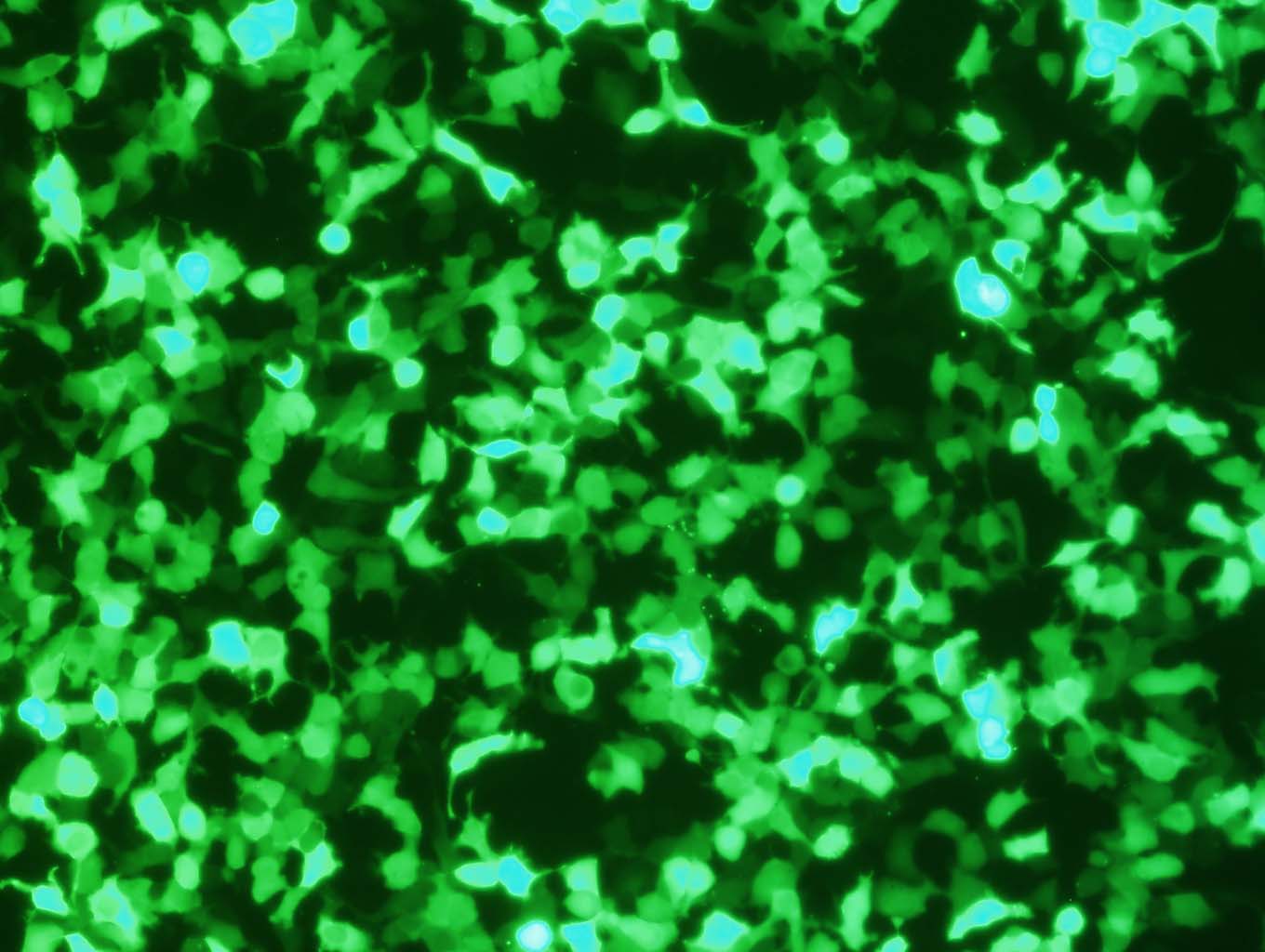Description
Cell to transfect:
Designations: 786-O
Cell Synonyms: 786-0, CRL-1932, NCI60, NCI-60, human kidney adenocarcinoma cell
Organism: Homo sapiens (human)
Tissue: renal cell adenocarcinoma; kidney
Age: 58 years
Gender: male
Ethnicity: Caucasian
Morphology: epithelial
Growth properties: adherent
Tumorigenic: yes, in immunosuppressed hamsters
Depositors: R.D. Williams
This line was derived from a primary clear cell adenocarcinoma. The cells display both microvilli and desmosomes, and can be grown in soft agar. The cells produce a PTH like peptides that is identical to peptides produced by breast and lung tumors. The peptide has an N terminal sequence similar to PTH, has PTH like activity.
786-O is one of the cell lines of the NCI-60 panel which represents different cancer types and has been widely utilized for drug screening and molecular target identification.
The Transfection Reagent Features:
- Broad spectrum for the transfection of large plasmid, mRNA, siRNA, and/or other type of nucleic acids, which is best for co-transfection of different type and/or size of nucleic acids.
- Unique formulation-maximize transfection performance in 786-O cells.
- Highest efficiency to ensure experimental success
- Extremely gentle to cells
- 0.5 ml is able to transfect about 1000 wells of 24-well plate
- Deliver single or multiple plasmids
- Compatible with serum
- Compatible with transfection in any plate formats
- Economical: High efficiency means less amount of nucleic acid & reagent is needed
Data
 FIG. 1. High throughput test of transfection efficiency (determined as RLU/mg) on 786-O cells after transfection of luciferase reporter gene by using our 172 proprietary transfection formulas and several most popular commercial transfection reagents. The yellow box showed the results of 4 commercial transfection reagents. The red lines marked our candidate formulas with the highest transfection efficiency for 786-O cells. This test result was confirmed with repeat experiments. The one that showed the optimal balance of potent & low cytotoxicity among those candidate formulas after flow cytometry analysis on the percentage of 7AAD positive cells was later named as this 786-O Cell Avalanche Transfection Reagent.
FIG. 1. High throughput test of transfection efficiency (determined as RLU/mg) on 786-O cells after transfection of luciferase reporter gene by using our 172 proprietary transfection formulas and several most popular commercial transfection reagents. The yellow box showed the results of 4 commercial transfection reagents. The red lines marked our candidate formulas with the highest transfection efficiency for 786-O cells. This test result was confirmed with repeat experiments. The one that showed the optimal balance of potent & low cytotoxicity among those candidate formulas after flow cytometry analysis on the percentage of 7AAD positive cells was later named as this 786-O Cell Avalanche Transfection Reagent.
 FIG. 2. 786-O cells were transfected with GFP vector (pEGFP-N3) by using 786-O Avalanche® Transfection Reagent. The cells were visualized by Nikon Eclipse Fluorescence microscope 24 hours post transfection.
FIG. 2. 786-O cells were transfected with GFP vector (pEGFP-N3) by using 786-O Avalanche® Transfection Reagent. The cells were visualized by Nikon Eclipse Fluorescence microscope 24 hours post transfection.
For Other Cells
786-O Cell Avalanche® Transfection Reagent (human kidney adenocarcinoma cell) can also be used on the following cells with high transfection efficiencies.
Caki-1 Cell
MDCK Cell
Vero Cell
293 Cell
293T/17 Cell
Recommended protocols for these cells will be provided with the reagent. The protocols usually provide satisfactory transfection efficiency with invisible cytotoxicity. However, optimization may be needed for certain type of cells. Optimizations may include: the amount of DNA and this transfection reagent; cell density; transfection reagent/DNA ratio, or incubation time for the mixture of transfection reagent/DNA etc. For best transfection result, we recommend using the respective cell type/cell line specific Avalanche transfection reagents. Those reagents have been optimized on both recipes and protocols, and have been proved to have the best transfection results for the respective cell lines or primary cells. You can easily find the respective Avalanche transfection reagents specific for your cells by using the filters of our product list.
Additional Information
| Weight | 0.5 lbs |
|---|---|
| Adherence Phenotype |
Adherent |
| Cell Type |
Epithelial Cell |
| Disease |
Cancer |
| Names starting from |
0-9 |
| Primary/Cell Line |
Cell Line |
| Product Sizes |
0.5 ml, 1.5 ml |
| Species |
Human |
| Tissue Sources |
Kidney |
| Subcategories |
Cell Type/Cell Line Specific |
Documents
Protocols
MSDS
Citations or Feedback


